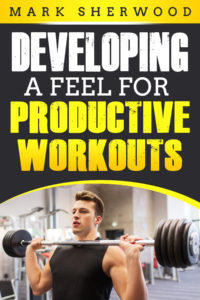One of my favorite bodybuilders is Freddy Ortiz. Anyone who can see should be able to recognize that he easily fits in to a small circle of bodybuilders who were among the greatest from the 1960’s. In my opinion, he is one of the best classic bodybuilders of all-time. Freddy had a mind-blowing physique that transcends the standards of any era of bodybuilding. He may not have had the bodyweight mass that bodybuilders have today, but he had fantastic size and perfectly sculpted muscles where it counted most. His bicep peaks are some of the greatest ever, and his classic V shape is still among the best. You can see the quality of his physique in the following videos:
.
.
What I find interesting about Freddy is that he doesn’t like to count reps when he trains; he simply goes by feel. (You can read about this in the article: A Rare Interview With Legendary Bodybuilder Freddy Ortiz). I believe in systematic training and systematic progression, and I also believe it is easier to be systematic when you keep track of the amount of sets and reps you are performing. However, you can be systematic and still be way off in terms of achieving an effective training state. What do I mean by effective training state?
An effective training state stems from the ability to feel the exercise in the muscle being worked, and to know how hard to push each set, how long to rest between sets, and how many sets to do for the muscle group being worked. I believe there are people, like Freddy, who know the correct training state by feel, not by counting sets and reps. Some lifters and bodybuilders get so entrenched in their predetermined numbers that they lose touch with what their body is trying to tell them.
One of your goals should be to gain enough experience to know when your body is telling you to stop a set. You should have a sense of how long to rest between sets, and when you have done enough sets and exercises for a given muscle group. It is also important to have a feel for how long to rest between workouts before working a muscle group again. If you constantly rely on numbers, you can ignore the obvious sensations that your body is trying to communicate in terms of how many reps, how many sets, how much weight, and how often to train. Learn to listen to your body.
It’s one thing to tell a lifter to listen to his body, it’s another to tell him what to listen for. This is why I often write about precision points and training thresholds. If you tune into your body, you will learn to develop body awareness and sense when these thresholds are occurring during your training. Push your sets as long as you can maintain a steady even rep pace, or go one rep past that point. Avoid slow, strenuous, grinder reps. Repeat sets for a muscle group as long as it is at full strength. When a muscle group begins to weaken, switch to a different muscle group. If you come back to the first muscle group and it has returned to full strength, you can work it more, but if it is still in a weakened state, stop working it.
Most elite bodybuilders and powerlifters have a tremendous feel for training. If you watch Phil Heath train, he has a tremendous sense for achieving an optimum training state. He uses perfect form and maintains a steady rep pace on all of his sets. If his rep speed is about to slow down, he stops. If he can’t do as many reps as he could on the previous set, he stops doing sets.
Within the world of powerlifting, Ed Coan has a tremendous feel for training. He always pushes hard enough to gain, yet he never falls short of his intended number of sets and reps, and he rarely maxes out to complete a training lift, or a contest lift. Ed has learned how to feel the sweet spot of training effort for consistent gains.
If you are using all kinds of complicated training schemes while neglecting to tune into what your body is telling you, consider changing your approach. There is nothing wrong with making plans, but listening to your body should be a part of your plans. Consider planning your workouts around training thresholds (which are precision points), but you can only plan around training thresholds if you can sense where they occur. Don’t neglect the concept of feel or body awareness in your workouts. Apply these principles and you will improve. Best of training to you.
Similar Content
Victor Richards was a massive bodybuilder from the 1980’s. Like Freddy, Victor did not count sets or reps when he trained. He emphasized the importance of listening to your body while working out, and to train by feel and instinct rather than to count sets and reps. Victor discusses his view on instinctive training in the following video:
.
In the following video, Mr. Olympia Phil Heath says, “I’m not even counting anymore, I’m just going by how I feel.” Phil was counting reps, but he wasn’t counting sets. He simply repeated sets as long as it felt right to do so.
.
.
.
Instinctive Training Article by Larry Scott
Instinctive Training by Precision Point Training
Stop Counting Reps And Just Get To It
Developing A Feel For Productive Workouts book: Click on the cover below:
.

